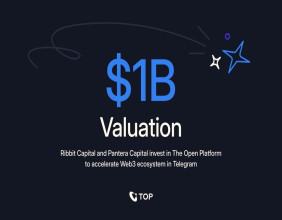Exchange-traded funds (ETFs) offer a simple and effective entry point for investors looking to navigate the financial markets. Understanding what ETFs are, how they differ from mutual funds, and the basics of investing in them is crucial for building a well-rounded investment portfolio. Here's a comprehensive guide to help you grasp the essentials of ETF investing. For insights and resources specific to the United States market, consider exploring platforms like Kalkine USA to enhance your understanding and make more informed decisions as you venture into ETF investing.
What is an ETF?
An exchange-traded fund (ETF) is an investment vehicle that enables investors to purchase a diversified portfolio of stocks or bonds in a single transaction. When investors buy shares of an ETF, the invested money is used to mirror a specific objective, such as tracking an index. For instance, investing in an S&P 500 ETF means your money will be distributed across the 500 companies in that index.
ETFs vs. Mutual Funds
While ETFs and mutual funds share a similar principle of pooling money from multiple investors, they differ in how you buy and sell them:
- Mutual Funds: Priced once per day, typically requiring a set dollar amount. Transactions are not instantaneous.
- ETFs: Traded on major exchanges like stocks, allowing investors to buy and sell shares throughout the trading day. Prices fluctuate continuously.
Understanding ETF Basics
Before delving further into ETF investing, grasp these fundamental concepts:
- Passive vs. Active ETFs: Passive ETFs, also known as index funds, track a specific index's performance. Active ETFs employ portfolio managers to actively invest funds, aiming to outperform an index.
- Expense Ratios: ETFs charge fees in the form of an expense ratio, presented as an annual percentage. Lower expense ratios are preferable, as they save investors money.
- Dividends and DRIPs: Most ETFs pay dividends. Investors can choose to receive dividends as cash or opt for automatic reinvestment through a Dividend Reinvestment Plan (DRIP).
Understanding ETF Taxes
If ETFs are held in a standard brokerage account, they may result in taxable income. Gains from selling an ETF and received dividends are subject to capital gains tax rules. Investing through an IRA offers tax advantages, with traditional IRAs taxing income upon withdrawal and Roth IRAs potentially exempt from taxes.
How Much Money Do You Need to Invest in ETFs?
ETFs don't have minimum investment requirements in the same way mutual funds do. However, as ETFs trade on a per-share basis, investors need at least the current price of one share to initiate an investment.
Pros and Cons of ETFs
Advantages:
- Diversification: Provides exposure to a range of assets at a minimal expense.
- Market Performance: Allows investors to match the market's historical performance.
- Liquidity: More liquid than mutual funds, offering easy buying and selling.
Drawbacks:
- Return Potential: May have lower return potential compared to individual stock investments.
- Costs: While often low-cost, investors may prefer the no-management-fee approach of individually buying stocks.
How to Start Investing in ETFs
Step 1: Open a Brokerage Account
Before buying ETFs, open a brokerage account. Many online brokers offer commission-free stock and ETF trades. Compare features and platforms, considering educational resources for new investors.
Step 2: Choose Your First ETFs
For beginners, passive index funds are recommended. They are cost-effective, and historically, actively managed funds struggle to outperform their benchmark indexes. Consider ETFs like:
- Vanguard S&P 500 ETF (VOO): Large U.S. companies
- Schwab U.S. Mid-Cap ETF (SCHM): Midsize U.S. companies
- Vanguard Russell 2000 ETF (VTWO): Smaller U.S. companies
- Schwab International Equity ETF (SCHF): Larger non-U.S. companies
- Schwab Emerging Markets Equity ETF (SCHE): Companies from developing economies
Step 3: Let Your ETFs Work for You
ETFs are designed to be low-maintenance investments. Resist the temptation to frequently check your portfolio, as over-trading can lead to underperformance. Allow ETFs to grow over time and deliver long-term investment growth.
In conclusion, ETFs offer a convenient and cost-effective way to build a diversified investment portfolio. Whether you're a novice investor or seeking a hands-off approach, incorporating ETFs into your investment strategy can contribute to achieving your financial goals.





